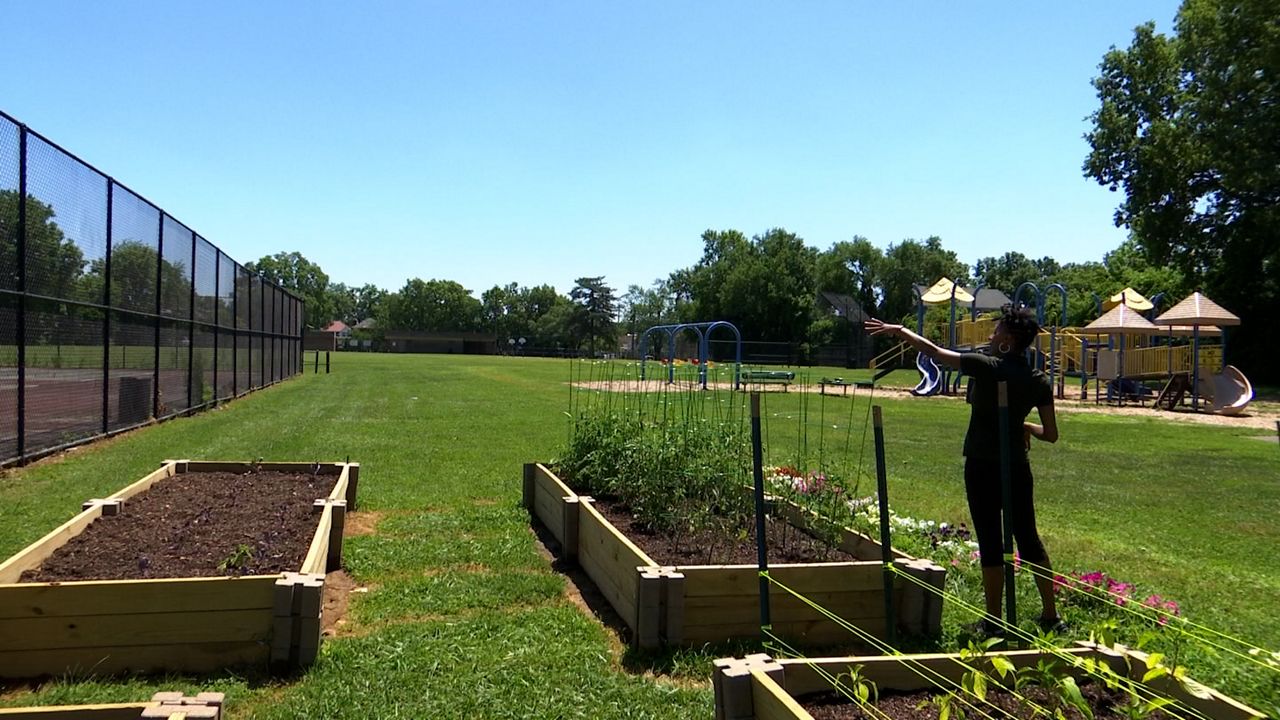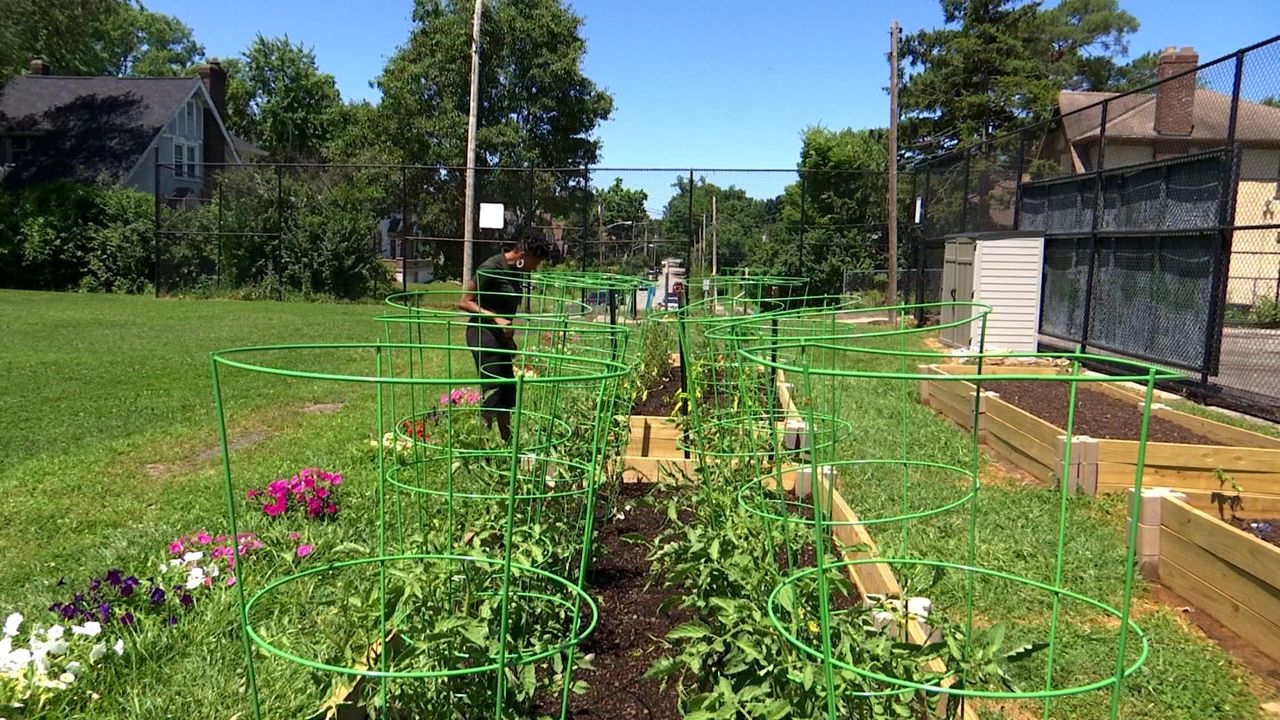CINCINNATI — Across Ohio’s cities, some neighborhoods are hotter than others, thanks to a phenomenon known as “heat islands,” or pockets of warmer air due to concentrated greenhouse gases and limited green space to absorb the summer heat.
In Cincinnati, Bond Hill and Roselawn, situated between two major highways, have some of the highest surface temperatures in the city. That’s why the Groundwork’s Climate Safe Neighborhoods project chose to partner with local neighborhood leaders to look for solutions.
Margaux Roberts has called the Bond Hill neighborhood home for fifteen years, all the while hoping to make her mark on the community.
“I care about my neighborhood and I know that that makes such a big difference,” she said.

Roberts works in the Bond Hill Community Garden
She’s been active at community council meetings, working with the Bond Hill beautification committee, and most recently, leading the climate advisory group connecting members of the Roselawn and Bond Hill community with the city of Cincinnati sustainability office, Green Umbrella and Groundwork Ohio River Valley.
The group spent last fall mapping out places in the two neighborhoods, most in need of climate mitigation, due to flooding, heat islands, air quality or other environmental issues. Now, Roberts said the group is organizing between the two neighborhoods to find solutions.
“We have to be active, and we have to utilize our voice to make sure that we’re building what we want to see within there,” she said.
One of the first projects she’s hoping to accomplish is the addition of street trees. Climate mapping revealed Bond Hill and Roselawn have very little tree canopy compared to the rest of the city, meaning there’s very little shade on hot days, limited green space to filter out greenhouse gases and help dissipate the heat.
Roberts said they hope to organize a planting in the fall with the urban forestry.
According to Dr. Pravin Bhiwapurkar, an associate professor of architecture at the University of Cincinnati, it’s a start, but said in the long term, the city may need cooling centers in neighborhoods like this to help provide relief from the heat.
“We know that really common health-related issues are heat strokes, heat exhaustion, heat cramps, heat rashes,” he said.
Besides that, the neighborhoods have a higher than average concentration of air toxins, increasing localized cancer risks.
As temperatures rise, Bhiwapurkar said it can be difficult for the energy grid to keep up with cooling demands as well, not to mention the cost to individual homes.
“Particularly in low-income communities, although people have air conditioners, not all of them will use them because of concern for the utility bills,” he said.

Roberts points out opportunities to improve tree canopy in Bond Hill’s largest park.
Roberts is optimistic if the word gets out about these affects, the community will get on board, advocating for change, working with local developers, and working for a greener future.
“I love to refer to it as the beauty of Bond Hill,” she said.
This is the second localized project through Groundwork ORV’s Climate Safe Communities. Mitigation efforts are already underway in Lower Price Hill, where the project began.




